Somerville Bowline

The Somerville Bowline might be the most popular column tie among serious riggers. It’s a subtle tie that is hard to learn, but it has numerous advantages compared to the basic single column tie:
- It’s much faster to tie
- It’s very stable
- It’s stable when pulled from the working end and/or the bight
The biggest disadvantage of the Somerville is that it can sometimes jam when it’s been under heavy load.
There are several variations of the Somerville—we find the two column Somerville to be the most useful.
Attribution
The Somerville is one of a family of ties invented by Topologist, who has a set of excellent articles and videos about them.
Step by step
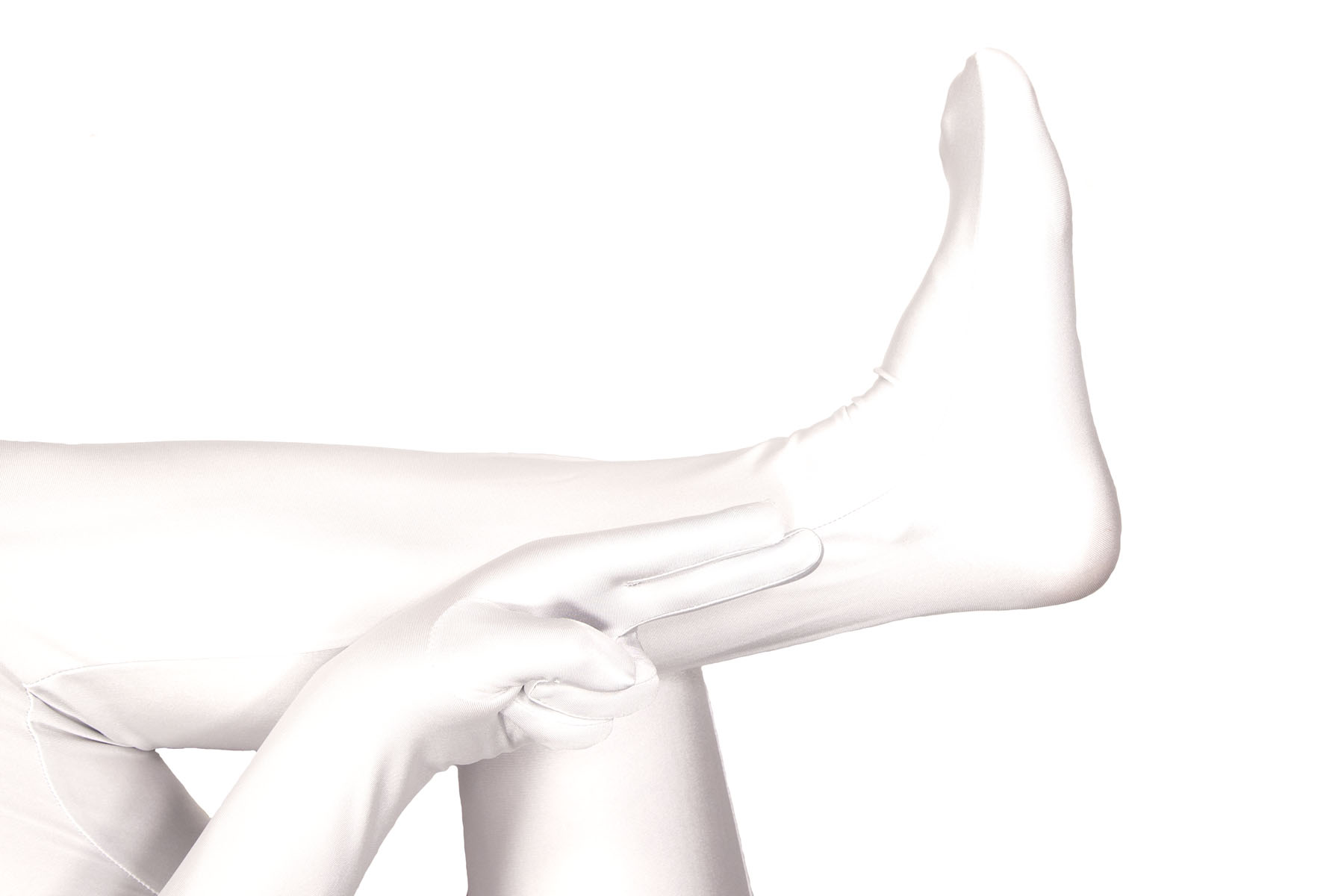
1Place your hand in Polite Mouse Fingers position, with the back of your hand touching the ankle and the index and middle fingers extended.
Remember: always use polite mouse fingers
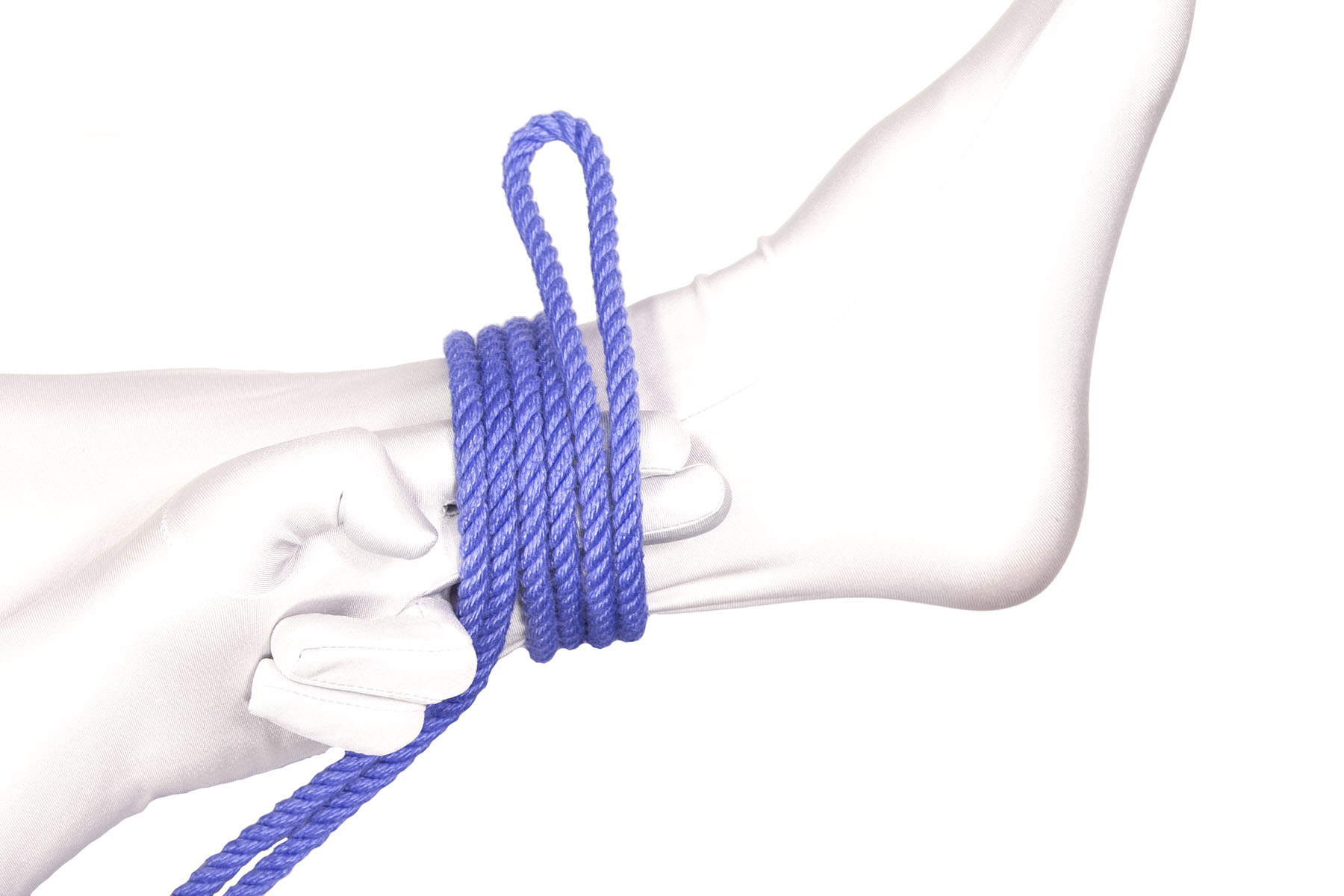
2Wrap the bight twice around your ankle, going away from you over the shin bone and back toward you under the Achilles tendon. The second wrap should be closer to your foot than the first one.
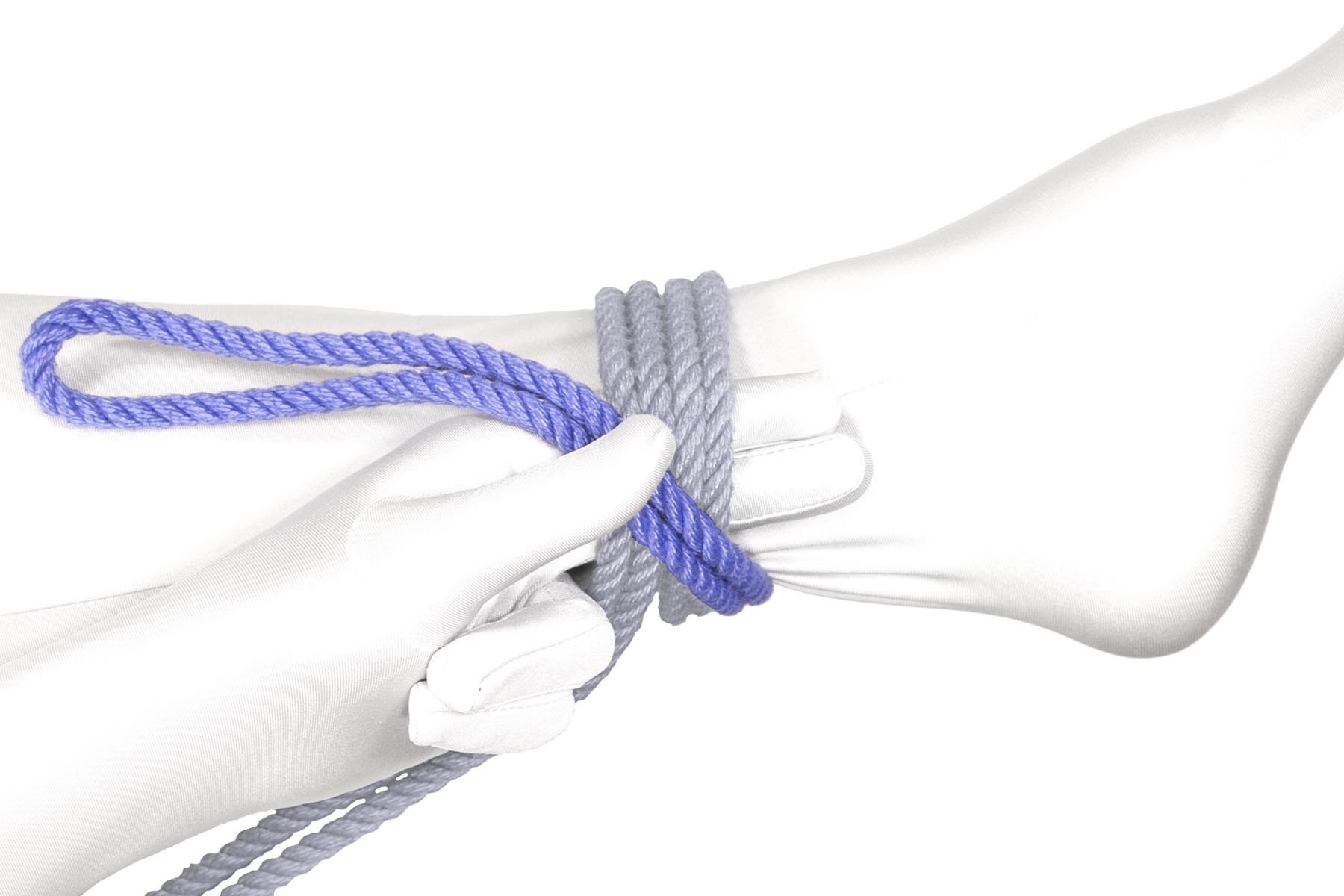
3Cross the bight over the wraps and hold it in place with your thumb.
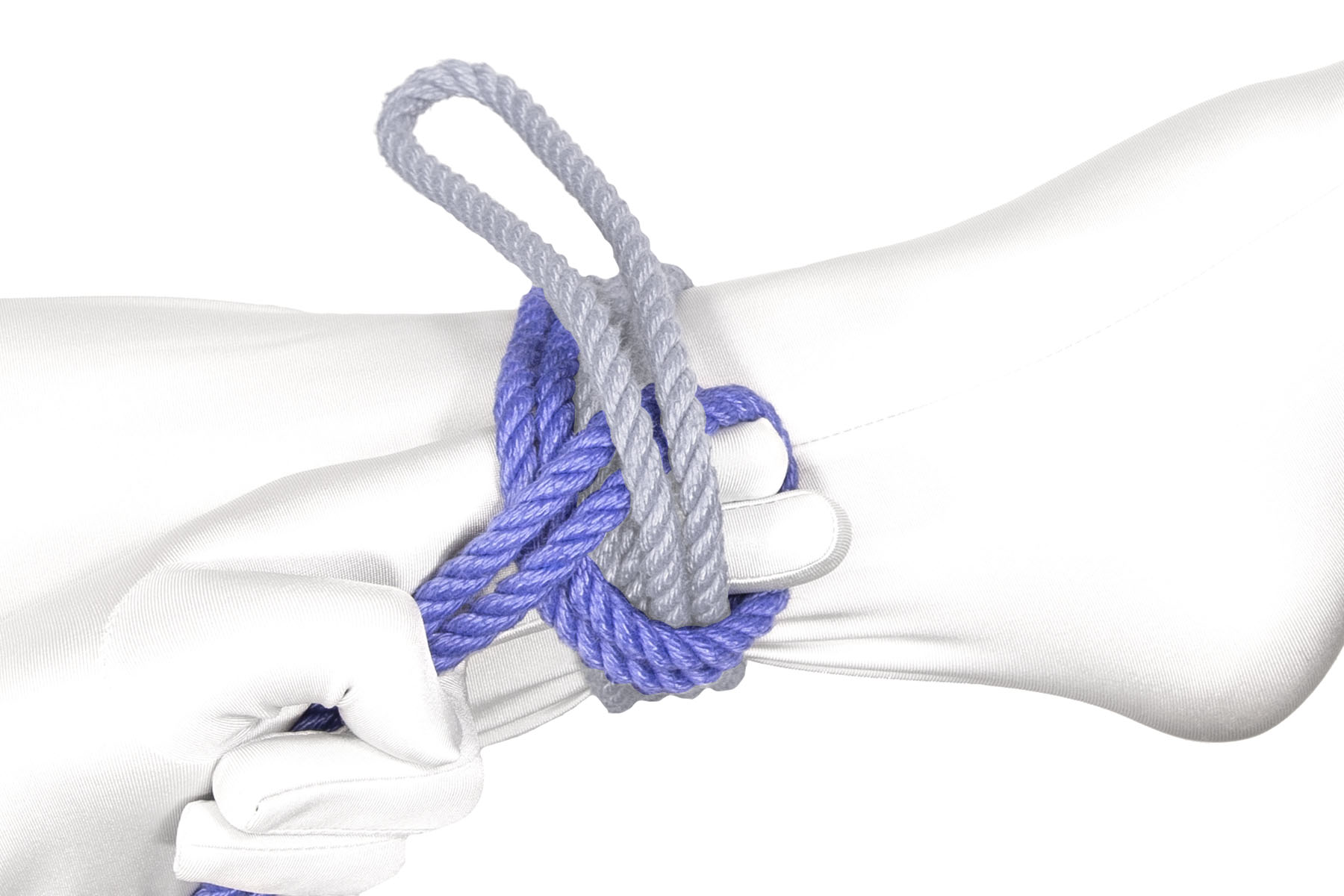
4Make a full circle around the bight with the standing part, passing under your fingertips.

5Note that the standing part makes an X where it crosses itself.
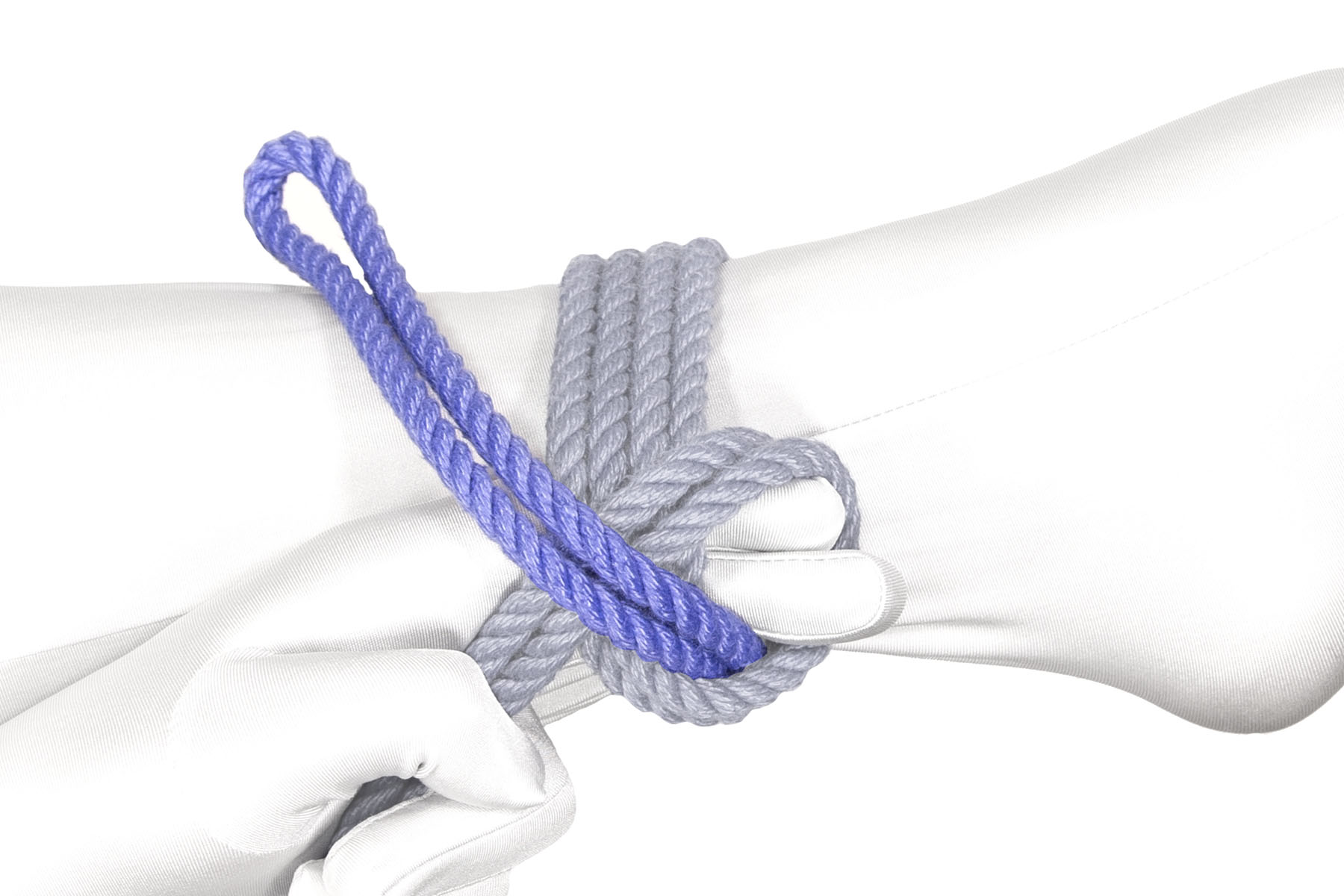
6Lay the bight over the X, making sure the bight is on top of the standing part.
Remember: X marks the spot

7Pass the bight under the wraps and up through the circle made by the standing part.
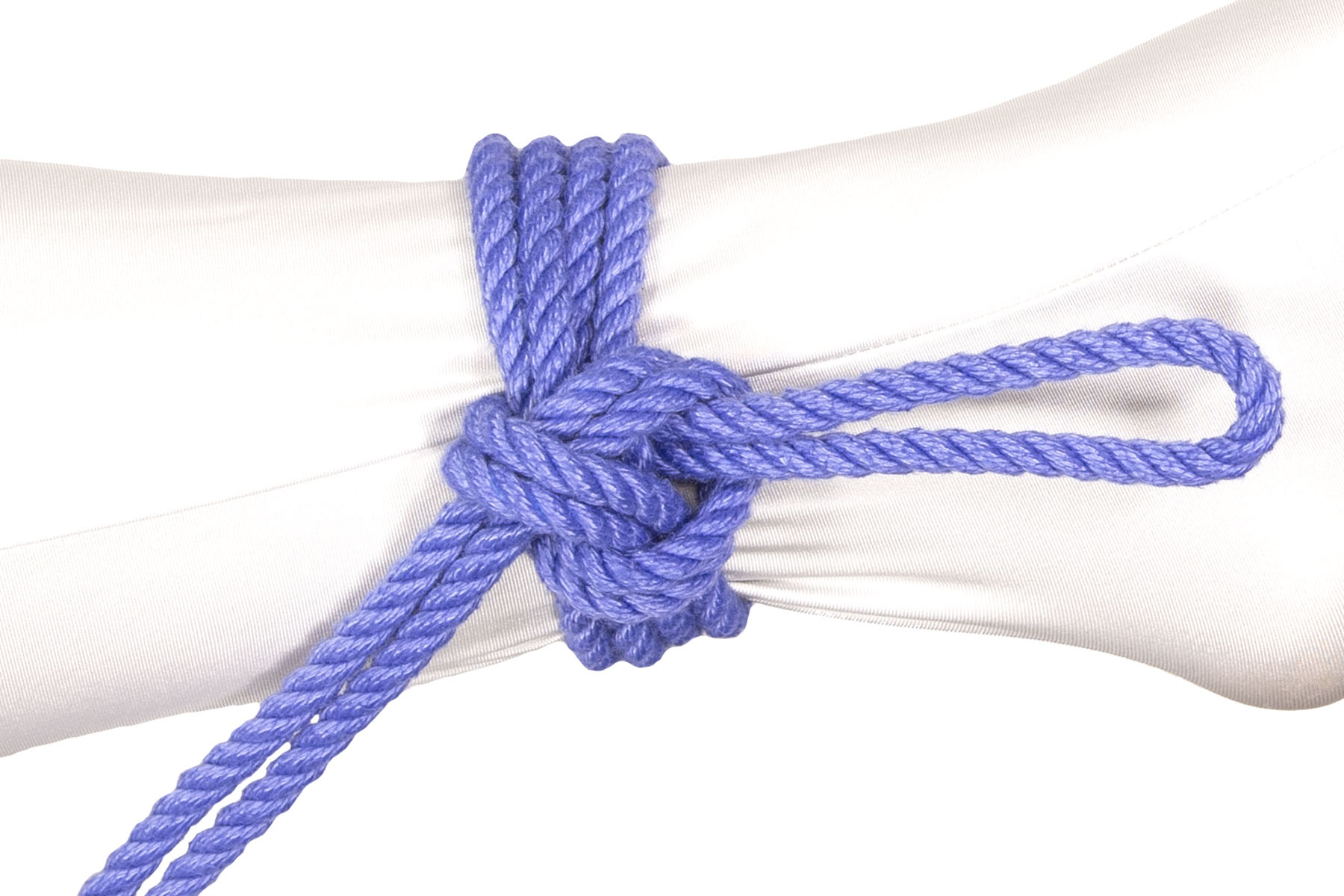
8Pull the bight and standing part simultaneously to snug the knot.